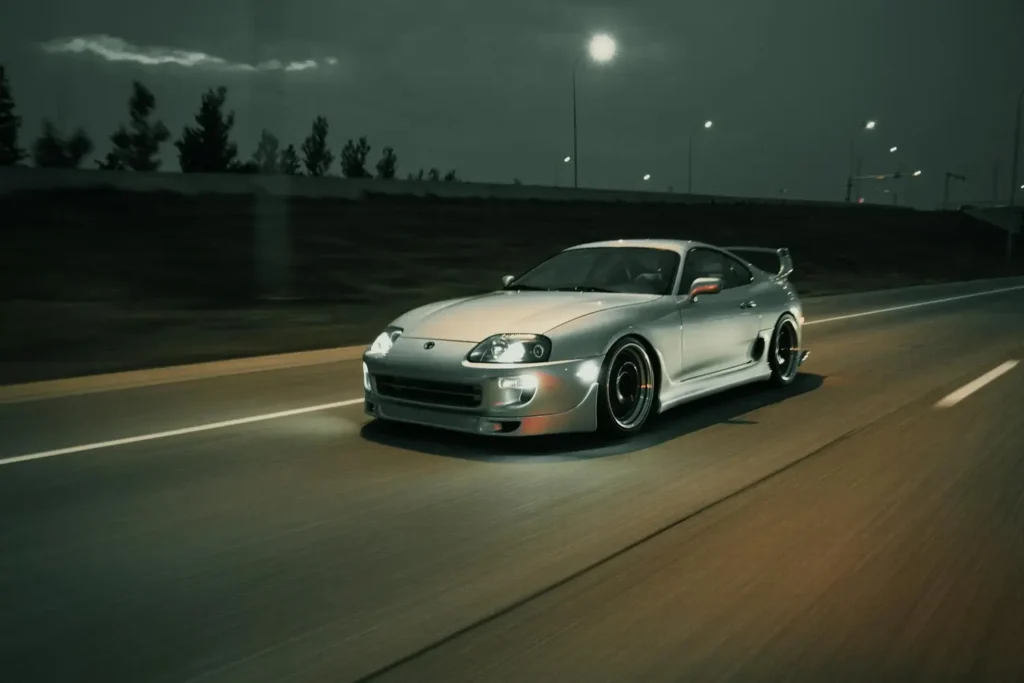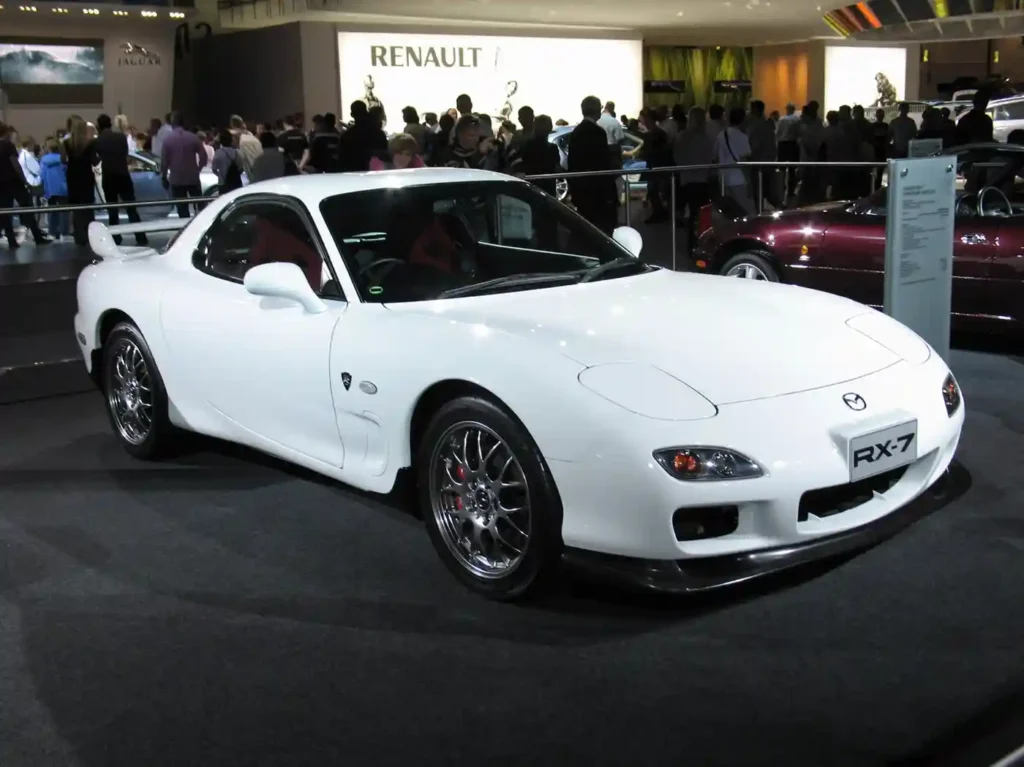Why JDM Cars Captured the World’s Attention
Japanese Domestic Market (JDM) cars have transformed from humble beginnings into legendary automotive icons that continue to dominate conversations among enthusiasts worldwide. These remarkable machines didn’t just compete with European supercars—they redefined what performance, reliability, and innovation could look like when wrapped in sleek Japanese engineering.
The story of JDM excellence begins in the 1980s and 1990s when Japanese manufacturers pushed boundaries, creating vehicles that would eventually become the stuff of automotive legend. From Tokyo’s neon-lit streets to racetracks across the globe, these cars proved that superior engineering and timeless design could come from the Land of the Rising Sun.
Today, these classic JDM legends command respect, admiration, and impressive price tags at auctions. Their influence extends far beyond Japan, inspiring countless modifications, racing victories, and even Hollywood blockbusters. Let’s explore five extraordinary machines that earned their place as global automotive icons.
1. Toyota Supra: The King of JDM Supercars

The Ultimate Performance Beast
The Toyota Supra stands as perhaps the most recognizable JDM icon ever created. Launched in the late 1970s and perfected through multiple generations, the Supra evolved from a sporty coupe into a turbocharged monster capable of embarrassing supercars costing twice as much.
How This Legend Dominated the Scene
What makes the Supra truly special isn’t just its impressive straight-line speed—it’s the perfect combination of bulletproof reliability and incredible tuning potential. The fourth-generation Supra (A80) became the poster child for JDM excellence, featuring the legendary 2JZ-GTE engine that could handle enormous amounts of power with minimal modifications.
The Supra’s iconic status was further cemented by its starring role in the Fast & Furious franchise, introducing an entire generation to JDM culture. Its distinctive long hood, muscular haunches, and aggressive rear spoiler create a silhouette that’s instantly recognizable from any angle.
Hidden Gems About the Supra
- The 2JZ-GTE engine can reliably handle over 1,000 horsepower with proper modifications
- Toyota originally designed the Supra to compete directly with Porsche’s 944 Turbo
- The aerodynamic design was so advanced that it achieved a drag coefficient of just 0.31
- Manual transmission models are now worth significantly more than their automatic counterparts
- The original development budget exceeded $1 billion, making it one of the most expensive car projects ever
2. Nissan GT-R: Godzilla from the East

The Supercar Slayer
Known affectionately as “Godzilla,” the Nissan GT-R represents the pinnacle of Japanese automotive engineering. This all-wheel-drive monster combines cutting-edge technology with raw performance, creating a machine that can humble supercars from established European manufacturers.
Why It Became a Global Phenomenon
The GT-R’s reputation was built on racetracks, where it dominated Group A touring car racing and later conquered the Nürburgring with lap times that shocked the automotive world. Its sophisticated all-wheel-drive system and twin-turbocharged RB26DETT engine created a formula that was virtually unbeatable in the right hands.
Beyond pure performance, the GT-R represented something revolutionary—accessible supercar performance wrapped in practical Japanese reliability. While exotic cars spent time in repair shops, GT-R owners could drive their machines daily without fear of catastrophic failure.
Fascinating Facts About Godzilla
- The RB26DETT engine was hand-assembled by a single technician whose signature appears on each motor
- Early GT-R models were never officially sold outside Japan, creating a thriving gray market
- The car’s nickname “Godzilla” came from Australian racing journalists who witnessed its track dominance
- ATTESA all-wheel-drive system can transfer power between wheels in milliseconds
- Modern GT-R development involved collaboration with PlayStation for Gran Turismo racing simulation
3. Mazda RX-7: The Rotary Revolution

Engineering Marvel with a Unique Heart
The Mazda RX-7 stands alone in automotive history as the most successful rotary-powered sports car ever created. This lightweight, perfectly balanced machine proved that innovative engineering could create something truly special when conventional wisdom was abandoned.
How It Redefined Sports Car Excellence
What sets the RX-7 apart isn’t just its unique rotary engine—it’s the perfect 50/50 weight distribution and low center of gravity that created handling characteristics unlike anything else on the road. The third-generation FD RX-7 combined stunning curves with incredible agility, earning praise from automotive journalists worldwide.
The rotary engine’s compact size allowed Mazda’s engineers to place it low and far back in the chassis, creating dynamics that rivaled purpose-built race cars. This engineering philosophy influenced an entire generation of sports car design.
Amazing Details About the RX-7
- The rotary engine produces power equivalent to a much larger piston engine while weighing significantly less
- Pop-up headlights became a signature design element that defines 1990s sports cars
- Sequential twin-turbo system provided smooth power delivery across the entire RPM range
- The FD generation’s body was designed using early computer-aided design technology
- Many consider it the most beautiful Japanese sports car ever created
4. Toyota AE86: The Drift King’s Weapon

Small Car, Massive Impact
The Toyota AE86 proves that legendary status isn’t always about raw power or exotic technology. This rear-wheel-drive compact car became the foundation of drift culture and earned respect through perfect balance, responsive handling, and an engaging driving experience that larger, more powerful cars often lack.
Why It Became a Cultural Icon
The AE86’s lightweight construction and rear-wheel-drive layout created the perfect platform for learning advanced driving techniques. When drifting emerged from Japanese mountain roads and entered mainstream motorsports, the humble AE86 was there, proving that skill mattered more than horsepower.
Its starring role in Initial D, both manga and anime series, introduced global audiences to the excitement of touge racing and drift culture. This cultural impact extended far beyond automotive enthusiasts, influencing fashion, music, and lifestyle trends.
Surprising Facts About the AE86
- The chassis code “AE86” became more famous than any official model name
- Perfect 53/47 weight distribution created handling characteristics that impressed professional drivers
- The car’s development focused on driver engagement rather than maximum performance figures
- Many professional drift drivers still prefer AE86 platforms for competition
- Toyota’s engineers intentionally made the car slightly tail-happy to enhance driving pleasure
5. Honda NSX: The Everyday Supercar

Precision Engineering Meets Exotic Performance
The Honda NSX shattered preconceptions about what a supercar should be. While European exotics were temperamental and difficult to live with, Honda created a machine that delivered supercar performance with the reliability and usability of a daily driver.
How It Changed the Supercar Game
Honda’s approach was revolutionary—instead of building the most powerful engine possible, they focused on creating the most balanced and refined driving experience. The NSX’s aluminum construction, mid-engine layout, and VTEC technology demonstrated that Japanese engineering could compete with established supercar manufacturers.
The development process involved Formula 1 legend Ayrton Senna, who provided feedback that helped Honda create a car that felt natural at the limit. This attention to detail resulted in a supercar that amateur drivers could enjoy without fear.
Incredible NSX Achievements
- First production car to feature an all-aluminum body structure
- VTEC engine technology provided linear power delivery without traditional supercar temperament
- Ayrton Senna’s input helped refine the suspension and handling characteristics
- Production quality standards exceeded those of traditional exotic car manufacturers
- The original NSX remained virtually unchanged for 15 years due to its perfected design
The Lasting Legacy of JDM Excellence
These five extraordinary machines represent more than just impressive engineering—they embody a philosophy of continuous improvement and attention to detail that defines Japanese automotive culture. Each car pushed boundaries in different ways, whether through innovative technology, perfect balance, or cultural impact that extended far beyond the automotive world.
